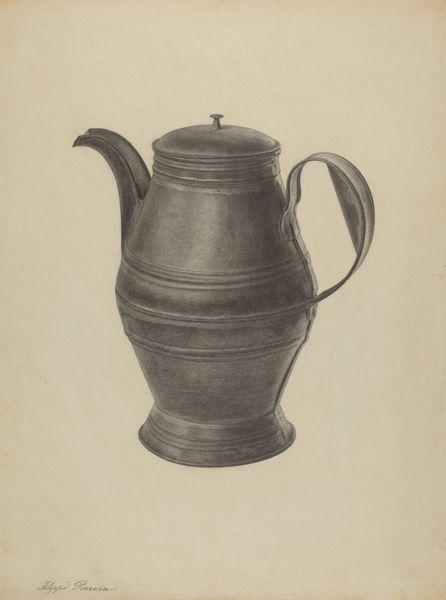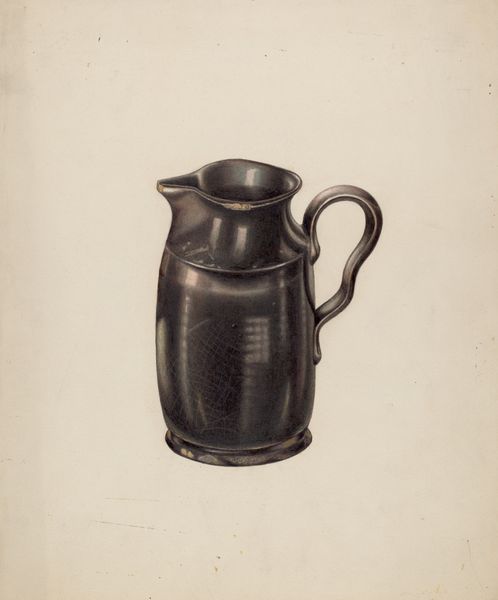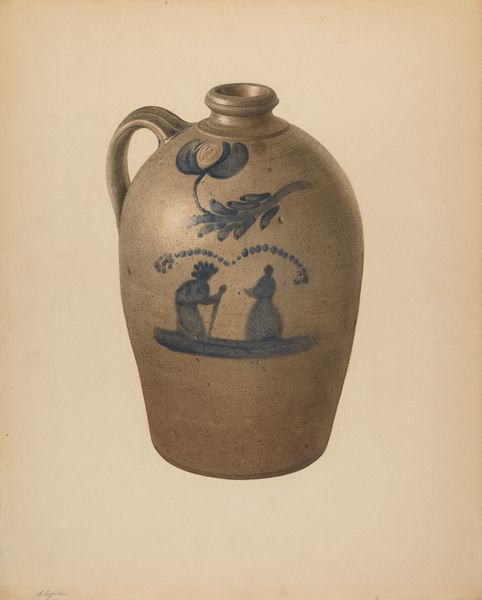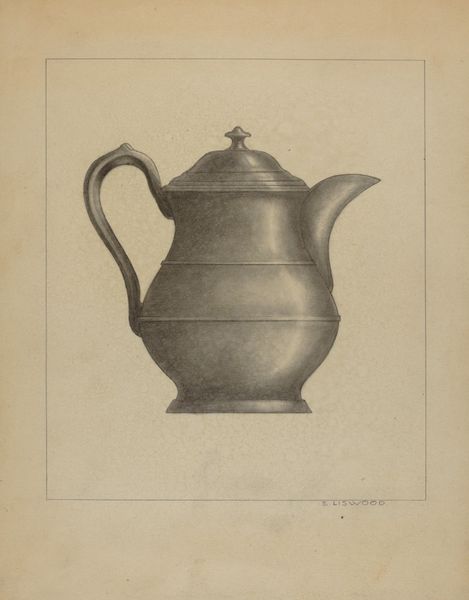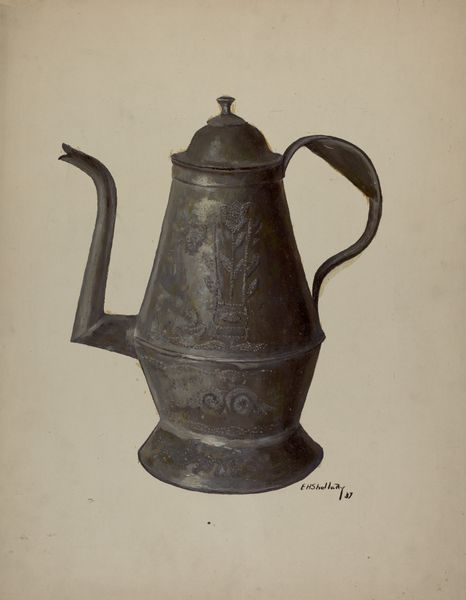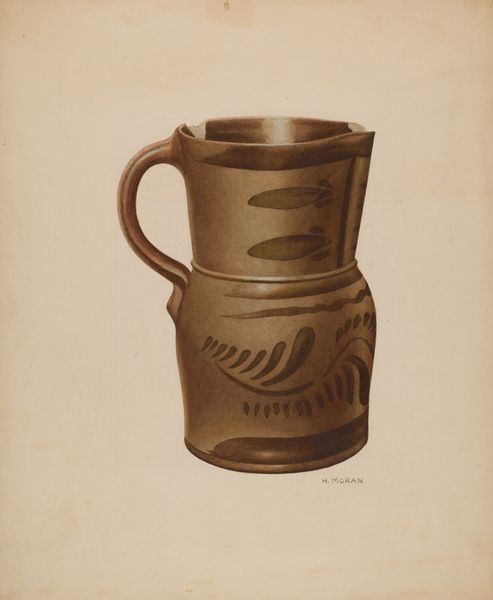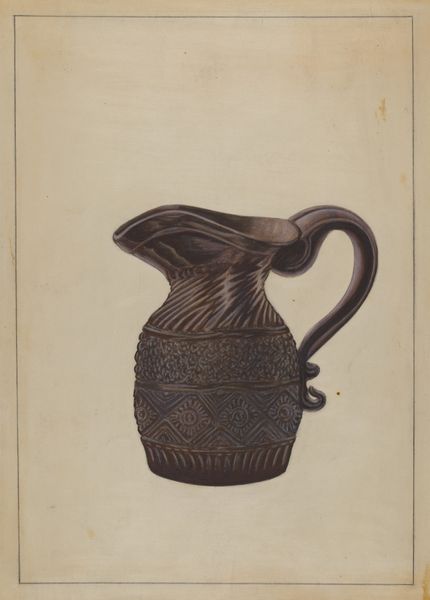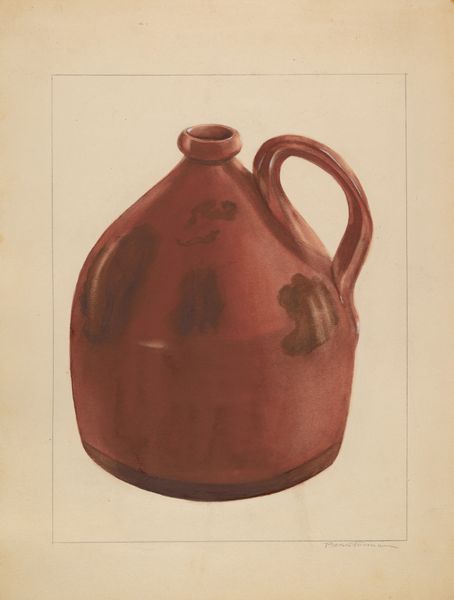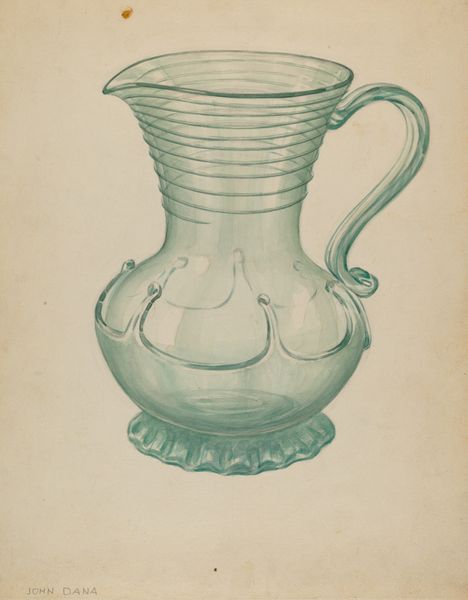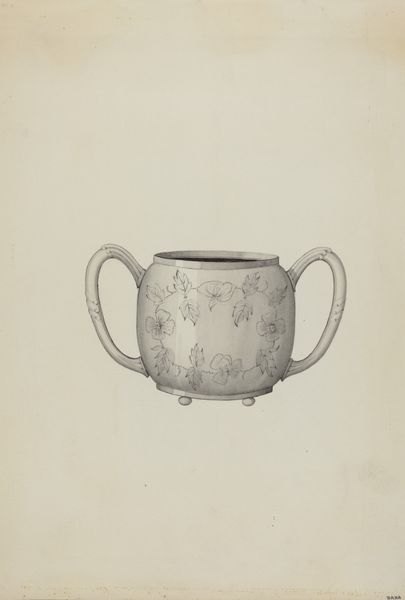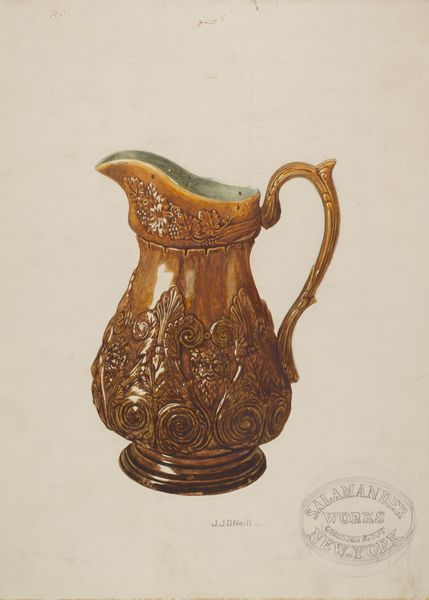
drawing, ink, pencil
#
pencil drawn
#
drawing
#
ink
#
pencil drawing
#
pencil
Dimensions: overall: 45.8 x 36.8 cm (18 1/16 x 14 1/2 in.) Original IAD Object: 11" High 4" Base
Copyright: National Gallery of Art: CC0 1.0
Editor: This is "Teapot" by Giacinto Capelli, created around 1940 using ink and pencil. I’m struck by the object’s rich tonal variation despite the limited color palette. What strikes you about this piece? Curator: It's a curious study in form and texture, isn’t it? The artist has rendered the volume of the teapot with remarkable precision, relying solely on gradations of tone to suggest light and shadow. Notice how the details, particularly the floral motifs and the whimsical figure atop the lid, are delineated not through bold lines, but subtle variations in pressure and density. Editor: Yes, the linework is fascinating. It’s very controlled. Does this level of detail suggest a specific artistic movement to you? Curator: While not explicitly aligned with any singular movement, its formal qualities are paramount. Observe how the artist directs our gaze along the curves of the handle, over the belly of the pot, and finally to the lid. It is through compositional strategies like these, the careful arrangement of line and form, that Capelli establishes visual hierarchy. How do you think the artist wants us to understand form in this context? Editor: That’s a great question. It does seem like he’s asking us to appreciate the interplay between function and decoration. Perhaps the object serves as a starting point for examining form as art, and decoration as a component that defines this form. Curator: Precisely. The ornament isn't merely superficial; it is structurally integrated. It emphasizes the object’s contours, its sense of weight, its tactility. The tension between the utilitarian object and its aesthetic enhancement invites sustained contemplation of form. I find myself reflecting on what the object really is, versus what it depicts, or intends to be. Editor: I see it now! It’s a brilliant demonstration of how meticulous observation and thoughtful application of technique can elevate a common object into a compelling work of art. The attention to gradations is really remarkable. Curator: Yes, this piece reminds me to look deeper at everything!
Comments
No comments
Be the first to comment and join the conversation on the ultimate creative platform.
